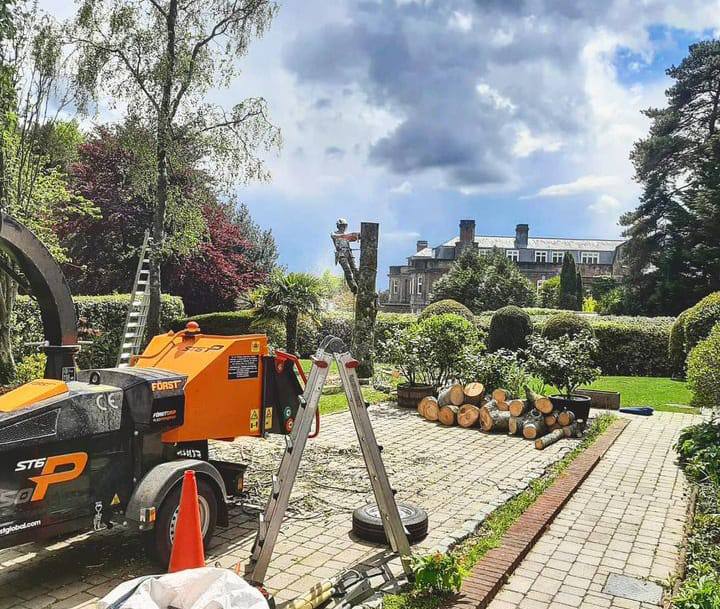Introduction: Aromatherapy gardens are a delightful addition to any landscape, offering a sensory experience that can relax and rejuvenate the mind and body. To create the perfect aromatic oasis, you must include fragrant trees in your garden. In this blog post, we’ll explore some fragrant tree choices and discuss how proper pruning can enhance their aromatic qualities.
1. Lavender Trees: Lavender is a beloved aromatic plant known for its soothing scent. While not a traditional tree, some varieties can grow tall and tree-like when pruned correctly. To encourage lavender to take on a tree-like form, regular pruning is essential. Trim the lower branches to create a trunk, and shape the upper growth for a tree-like appearance. The result is a fragrant lavender tree that not only smells divine but also adds visual appeal to your garden.
2. Citrus Trees: Citrus trees, such as lemon, lime, and orange, are well-known for their refreshing, zesty scents. These trees can be pruned to maintain a more compact size, making them suitable for large and small gardens. Regular pruning helps improve air circulation and sunlight penetration, ensuring that citrus trees produce abundant, fragrant fruits and blossoms.
3. Rose Trees: Roses are renowned for their captivating fragrance. While rose bushes are common, rose trees are more elegant and aromatic. Pruning is crucial to maintain the desired tree shape. Remove any suckers or offshoots at the base of the plant, and shape the canopy to encourage abundant flowering. With proper pruning, your rose trees will offer a delightful and romantic aroma.
4. Eucalyptus Trees: Eucalyptus trees are known for their distinctive, refreshing scent. These trees can grow quite tall, making them ideal for larger gardens. Pruning eucalyptus trees involves removing dead or diseased branches and shaping the canopy for desired density. The aromatic oils in eucalyptus leaves are released through pruning, enhancing the fragrance in your garden.
5. Jasmine Trees: Jasmine is renowned for its sweet, intoxicating fragrance. Some varieties can be trained to grow as trees, making them a stunning addition to any aromatherapy garden. Pruning jasmine trees involves shaping and thinning the canopy to promote air circulation and optimise flower production. Regular pruning will ensure your jasmine tree remains fragrant and visually appealing.
Conclusion: Pruning fragrant trees in your aromatherapy garden is a crucial step in maximising their aromatic potential. Each of these fragrant tree choices offers a unique and delightful scent to enhance your garden’s ambience. Whether you prefer soothing lavender, zesty citrus, romantic roses, invigorating eucalyptus, or sweet jasmine, proper pruning will help you create a fragrant paradise in your backyard.
Call us on: 023 9200 1796
Click here to find out more about The Tree Surgeon Waterlooville
Click here to complete our contact form and see how we can help with your tree’s needs.


